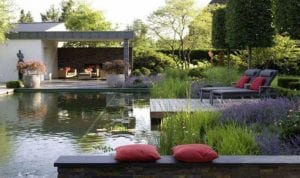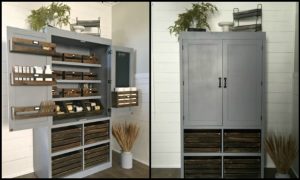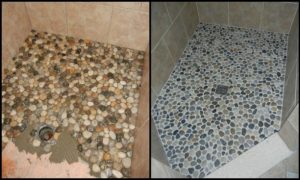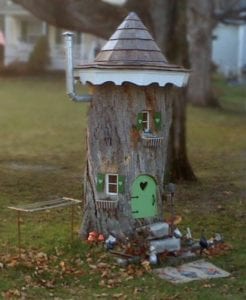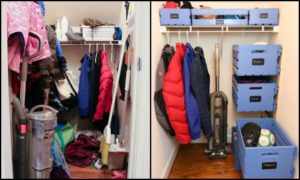
Creating a backyard studio offers a dedicated space for hobbies, work, or relaxation without the cost of an office rental or home extension. Building this personal retreat doesn’t have to strain your finances. With some creativity and strategic planning, you can establish a functional and inviting backyard studio on a budget.
This guide will walk you through affordable strategies to transform your backyard into a versatile studio, making efficient use of space and resources while maintaining style and functionality.
Contents [show]
Why Create a Backyard Studio
A backyard studio is a separate construction situated in your garden or yard. It is a flexible area that can be set aside for anything from a home office to an art studio to a workout room to even a quiet retreat for meditation and leisure. Unlike conventional home extensions, a backyard studio is unique from the main living area and provides privacy and a dedicated space that promotes focus and creativity free from the distractions of daily home life.
For those wishing to increase their available living space without incurring the high expenses and disturbance involved in house renovations, building a backyard studio is a pleasing alternative. It raises the value of the property and offers a reasonably priced way to address main house space restrictions. Furthermore, a backyard studio gives you the freedom to create a place that exactly meets your needs for either personal or business, so improving your way of life or working output right in the comfort of your own backyard.
Planning Your Studio
Creating a backyard studio starts with careful planning. This stage is crucial as it sets the foundation for a successful build, ensuring the studio meets your needs, complies with legal requirements, and stays within budget. Here’s how to plan effectively for your backyard oasis.
Assessing Your Needs: Purpose and Function
Begin by defining the primary purpose of your studio. Will it be a quiet place for writing or painting, a bustling workshop, or perhaps a serene spot for yoga and meditation?
Understanding its function will guide your design choices, from the size of the space to the type of lighting and storage solutions you’ll need. Consider how the studio’s use might evolve over time and plan for adaptable features that can accommodate changing needs.
Zoning Laws and Permits: What You Need to Know
Before any construction begins, familiarize yourself with local zoning laws and building codes. These regulations can affect everything from the structure’s size and placement to electrical wiring standards.
Obtaining the necessary permits is a critical step that can prevent legal issues and fines. In some areas, the requirements might be minimal for structures under a certain size, but always check with your local building department to be sure.
Budgeting: Estimating Costs and Saving Tips
Establishing a budget early on is essential. Itemize potential expenses, including materials, labor (if you’re not going DIY), tools, furnishings, and any required permits. Don’t forget to factor in contingency funds for unexpected costs, which are common in construction projects.
To keep expenses down, consider repurposing materials, doing some or all of the work yourself, and shopping around for deals on supplies. Planning your purchases around sales, using reclaimed materials, and simplifying the design can all contribute to significant savings.
Your planning phase is the groundwork for your project. By carefully considering each of these aspects, you ensure that the building process is as smooth and stress-free as possible, resulting in a backyard studio that not only meets your needs but also stays within your budget.
Designing the Studio
The design phase of your project is where creativity meets practicality. Here, you will shape the aesthetic and functionality of your space to ensure it fulfills your vision while adhering to practical constraints like budget and land usage. Effective design is about making smart choices that reflect your personal style and meet your functional requirements.
Choosing the Right Location: Factors to Consider
Selecting the ideal spot for your studio involves more than just finding available space. Considerations should include sunlight exposure, important for both natural light and energy considerations, as well as privacy, accessibility, and views. You’ll also want to think about proximity to your home if you require utilities or a Wi-Fi connection. Additionally, consider the natural flow of your garden and how the studio will integrate with existing landscaping or structures.
Space-Saving Design Ideas: Maximizing Utility
Making the most of little space is absolutely vital in smaller gardens. Choose designs with built-in storage, fold-away chairs, or multifarious utility. Maximizing floor space can be especially successful with vertical storage options and loft spaces. Retractable windows or sliding doors can also help save space while allowing lots of natural light and simple access to outside areas.
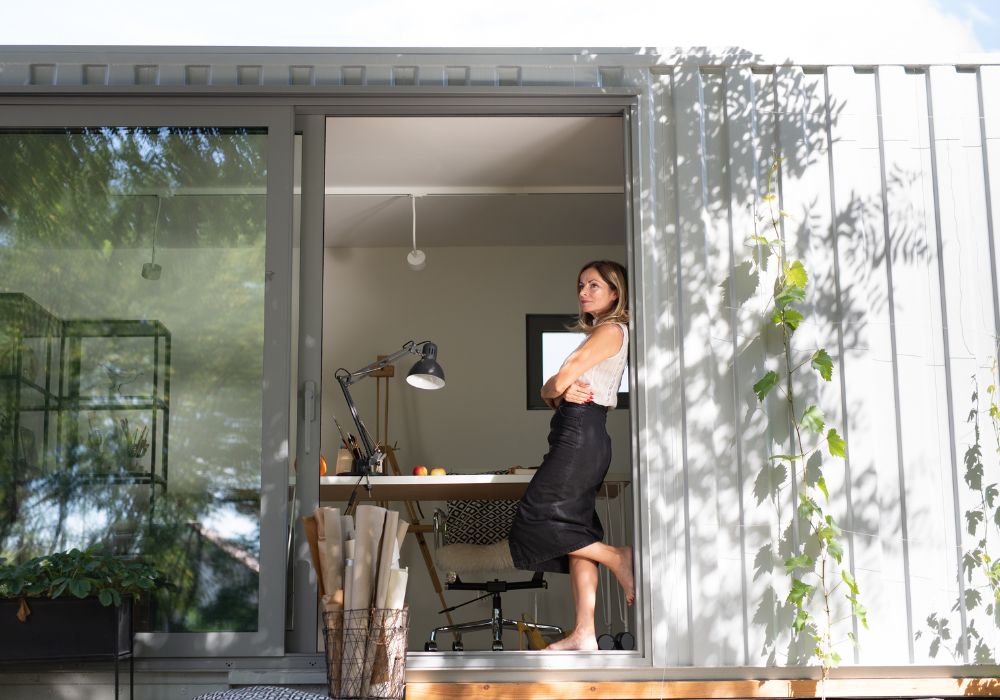
Selecting Affordable Building Materials
Your studio’s look and cost will be much influenced by the materials you use. Choose reasonably priced, durable and aesthetically pleasing materials without sacrificing quality.
Reclaimed or recycled wood, for instance, not only brings character but also is reasonably priced and environmentally friendly. Analogously, polycarbonate panels offer great natural light and can be less costly than conventional roofing materials.
Designing your space deliberately guarantees that it will not only fulfil its intended use but also turn into a beloved addition to your house. Your property and way of life will be improved by a lovely and useful space created by careful location, maximum use, and material choice.
Building the Structure
Constructing your backyard studio involves a detailed approach to ensure the structure is safe, durable, and aligns with your initial design plans. Whether you decide to manage the build yourself or hire professionals, understanding each step of the construction process is crucial.
Step-by-Step Construction Guide
- Foundation: Start with a solid foundation. Depending on your backyard studio’s size and design, options range from concrete slabs to more cost-effective gravel or pier foundations.
- Framing: Construct the frame using durable materials to support the walls and roof. This skeletal structure forms the backbone of your backyard studio.
- Roofing and Siding: Choose roofing materials that will protect against weather while complementing your home’s style. Siding also adds to the aesthetic while providing additional insulation.
- Doors and Windows: Install doors and windows that enhance natural light and provide adequate insulation. High-quality seals help maintain temperature control and energy efficiency.
- Interior Finishing: This includes insulation, drywall installation, painting, and flooring. These elements make your backyard studio comfortable and habitable, regardless of the weather.
Insulation and Weatherproofing on a Budget
Proper insulation is vital for making your backyard studio usable year-round. Fiberglass, while traditional, is cost-effective and offers good thermal resistance. For weatherproofing, consider sealants and weather strips for doors and windows. These small additions prevent air leaks and help maintain temperature control, making your backyard studio more energy-efficient.
DIY vs. Hiring Professionals: Pros and Cons
Building a backyard studio can be a rewarding DIY project, offering personal satisfaction and potential cost savings. However, it requires a significant time commitment and some level of skill in carpentry and construction. For those less experienced, hiring professionals can be a wise choice to ensure the structure is built safely and up to code. Professionals can also help navigate any complex parts of the build, such as electrical wiring or plumbing.
Building your backyard studio with attention to these details ensures a high-quality, lasting addition to your property. By balancing the DIY approach with professional help when necessary, and focusing on solid construction practices, you’ll create a space that’s both functional and inviting.
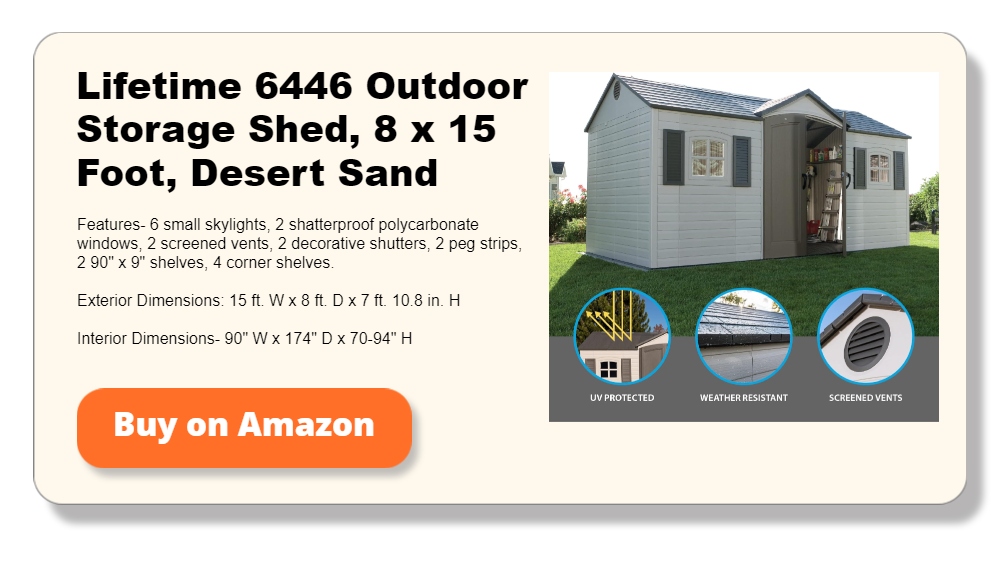
Interior and Exterior Decoration
Decorating your backyard studio involves more than just aesthetic appeal, it’s about creating a space that reflects your personal style while being functional and welcoming. Thoughtful interior and exterior decoration can transform a simple structure into a vibrant and inspiring place.
Here’s how to achieve a beautifully decorated studio that complements your home and garden without overshooting your budget.
Affordable Decorating Tips for a Stylish Studio
Interior decorating on a budget doesn’t mean you have to compromise on style. Start by choosing a color scheme that reflects the intended mood of your studio. Soft, neutral colors can make the space feel larger and brighter, while bold colors can add character and vibrancy. Use inexpensive yet stylish drapes and blinds to control the amount of natural light and add privacy.
In terms of furniture, opt for pieces that are both functional and aesthetic. Thrift stores, estate sales, and online marketplaces are great sources for unique, affordable furniture. If you’re handy, consider DIY projects like repainting old furniture or crafting custom shelving units from reclaimed wood. These elements add a personal touch and can be tailored exactly to your space and needs.
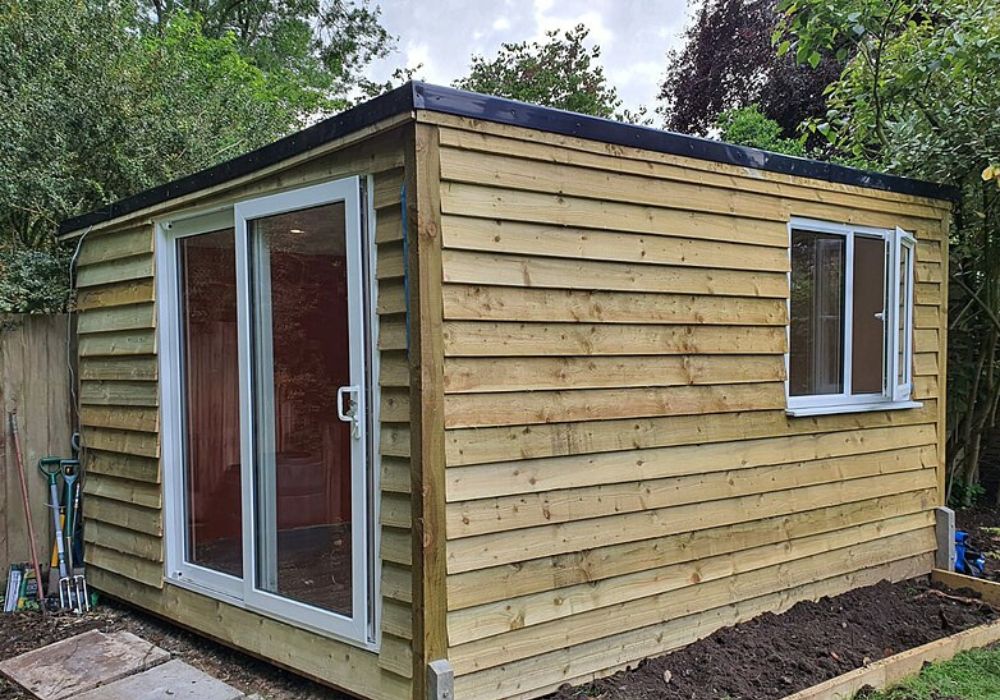
Functional Furnishings That Won’t Break the Bank
To maximize the utility of your backyard studio without overcrowding it, select multi-functional furniture. A fold-out sofa bed can serve as a seating option during the day and convert into a bed for guests or napping. Similarly, an expandable desk can be tucked away when not in use. Look for items with built-in storage to keep your studio organized and clutter-free.
For seating, instead of buying new, you might repurpose dining chairs or refinish old office chairs. Adding cushions or new upholstery can breathe new life into these pieces. This approach not only saves money but also gives you the opportunity to customize the look to match your studio’s decor.
Landscaping Ideas to Complement Your Studio
The exterior of your backyard studio should blend seamlessly with the surrounding landscape to create a cohesive look. Begin by considering the pathways that lead to the studio. Use stepping stones, gravel, or decorative bricks to create attractive, functional paths that are harmonious with the rest of your garden.
Around the studio, consider planting a mix of perennials and annuals to bring color and life throughout the year. Tall plants or trellises with climbing vines can provide natural privacy screens while also adding to the aesthetic. If space allows, installing a small water feature like a fountain or a birdbath can enhance the tranquility of the setting.
For the studio itself, consider exterior paint colors that complement your home’s exterior to integrate the structure into your property seamlessly. Adding external lighting fixtures like solar-powered path lights or string lights can create a welcoming ambiance and extend usability into the evening.
Affordable Art and Decor
Personalize your space with art and decor that speaks to your tastes. DIY art projects, like canvas paintings or framed photographs, can make the space feel more personal and lived-in. Handmade pottery, sculptures, or textile art can add texture and interest to your studio.
Don’t overlook the power of greenery inside your studio. Houseplants not only beautify the space but also improve air quality. Choose species that thrive in indoor conditions and require minimal maintenance, such as snake plants or pothos.
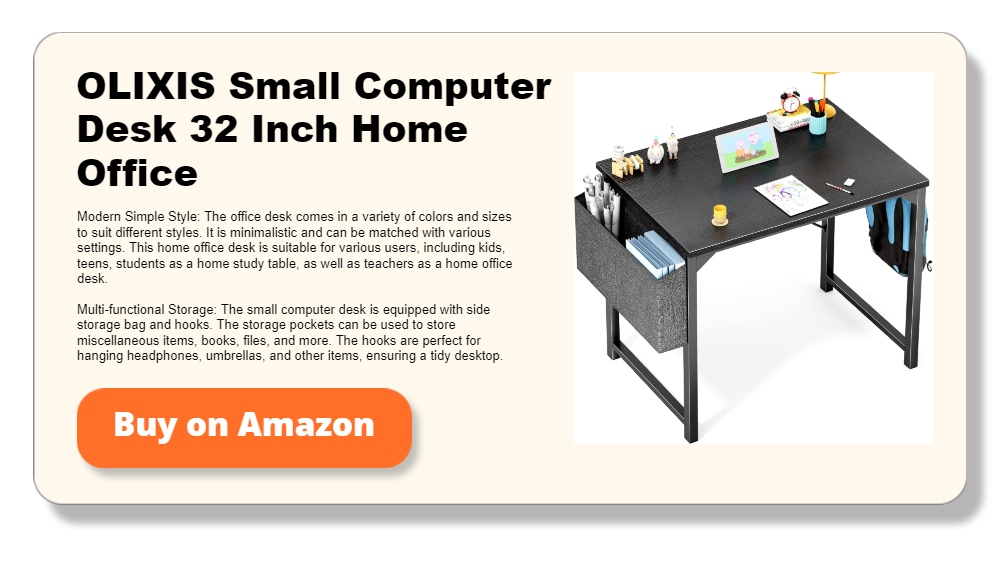
Making It Your Own
Finally, remember that your backyard studio is a reflection of your personality and needs. Whether it serves as a creative workshop, a home office, or a retreat for relaxation, personalize it with items that inspire you and make you feel comfortable. This could include anything from a collection of your favorite books to instruments, crafting materials, or even a small coffee or tea station.
By thoughtfully decorating both the interior and exterior of your backyard studio, you create a functional and attractive space that not only serves its purpose but also enhances the overall beauty and utility of your home environment. This personal oasis not only adds value to your property but also to your daily life, providing a sanctuary just steps from your back door.
Utilities and Technology
Making sure your backyard studio has the required utilities and technology improves not only its use all year long but also its functionality. Strategic investments in these areas and careful planning will help your studio to be as handy and comfortable as any room in your house.

Setting up Power and Internet: Cost-effective Solutions
If you intend to use the studio for tasks or activities requiring power, you must set up your electrical wiring. Running a buried conduit from your main house to the studio can safely and subtly provide electricity for a reasonably low cost. Employing a licenced electrician to handle this task guarantees that it is correctly installed and conforms to local codes.
Another safe and easy solution is to consider a portable power station. These can power a wide range of appliances and electronics, especially a laptop and other equipment needed for your studio.
Should your studio be near enough to your house, a Wi-Fi extender could be sufficient to improve the signal of your home network so covering the studio area for internet access. Alternatively, a dedicated line can be set up to guarantee fast connectivity required for events including streaming, video conferences, or online gaming.
Eco-friendly Options: Solar Power and Rainwater Collection
Think about including environmentally friendly technologies to possibly cut utility costs and your own environmental impact. Especially in sunny locations, solar panels can be a wise investment. They run computers, lights, and small appliances from a sustainable energy source. The long-term savings on energy bills balance the initial setup cost.
Installing rainwater collecting systems will help you to gather rainfall for use in your garden or for non-potable water needs in the studio. Usually comprising gutters, a filtration system, and a storage tank, this system is a straightforward but efficient approach to cut water consumption.
Heating and Cooling Solutions
Keeping a comfortable temperature within your studio is absolutely vital, particularly if you intend to use it year-round. Start with insulated walls and energy-efficient windows. But, you also have to give heating and cooling systems some thought.
For smaller areas, portable heaters and air conditioners can be efficient; they can also be used just when the studio is occupied, so saving on energy costs. A mini-split system can offer effective heating and cooling without requiring large ductwork for a more integrated solution.

Lighting and Security
Both functionally and aesthetically, good lighting is absolutely vital. For lifetime and energy economy, LED lights are quite good. From overhead to task lighting at desks or reading nooks, they can be used in a range of ways.
Another great factor is security. Install simple security cameras connected to Wi-Fi for monitoring; smart locks let you remotely from your smartphone control access, so offering both security and convenience.
Your backyard studio will be a completely modern space that fits your house and lifestyle if you carefully consider and combine these utilities and technologies, so improving its functionality, comfort, and security.
Making the Most of Your Studio
Optimizing your backyard studio’s use comes last once it’s finished. Whether your studio functions as a personal retreat, a professional office, or a creative space, there are several ways to maximize its use and appeal. This will help you to make sure your studio stays a flexible and beloved part of your house.
Organizational Hacks for Small Spaces
Maintaining a functional studio depends mostly on effective organization, especially considering limited space. Install shelves high to make use of vertical space and wall-mounted organizers to While pegboards provide a flexible answer for hanging objects that can be quickly changed as your needs evolve, magnetic strips can hold metal tools or office supplies.
Think about furniture that doubles as storage, including desks with built-in shelves or ottomans with secret compartments. When not in use, collapsible or foldable furniture can also help to save space by freeing the area for other uses.
Maintenance Tips to Keep Costs Down
Regular maintenance will help prevent costly repairs and keep your studio looking its best. Schedule periodic checks on the structure’s integrity, especially after extreme weather conditions. Clean and inspect gutters, roofs, and foundations to avoid water damage.
Keep the interior environment healthy by cleaning filters in HVAC systems and keeping the space dust-free. Regularly check for pests, mold, or mildew, particularly in areas prone to dampness.
Personalizing Your Space
Ultimately, your backyard studio should reflect your personal style and needs. Decorate with items that inspire and uplift you. Art, photographs, plants, and personal mementos can make the space feel truly yours. Create a sensory experience with items like a small water fountain for sound, soft textiles for comfort, and aromatic diffusers to enhance the ambiance.
By incorporating these organizational strategies, using adaptable furniture, conducting regular maintenance, and personalizing the space, you can fully enjoy the benefits of your backyard studio. It’s about creating an environment that enhances your productivity, creativity, and relaxation.
Conclusion
Building a backyard studio doesn’t have to break the budget. Strategic planning and clever design will help to make it reasonably priced and fashionable. Emphasize natural lighting and multifunctional furniture to make the space functional and comfortable. Your new studio will improve your house and life once finished and provide a special haven for rest or inspiration.

